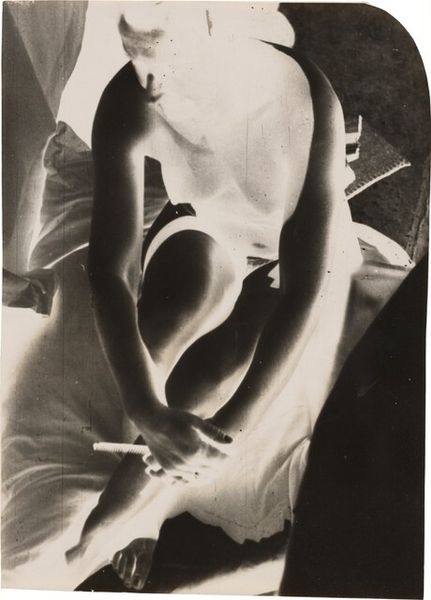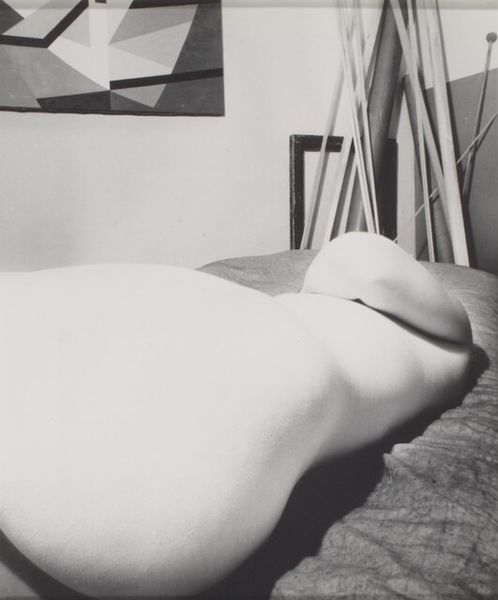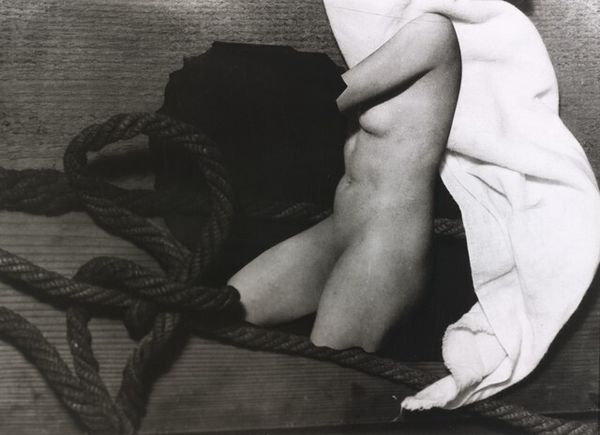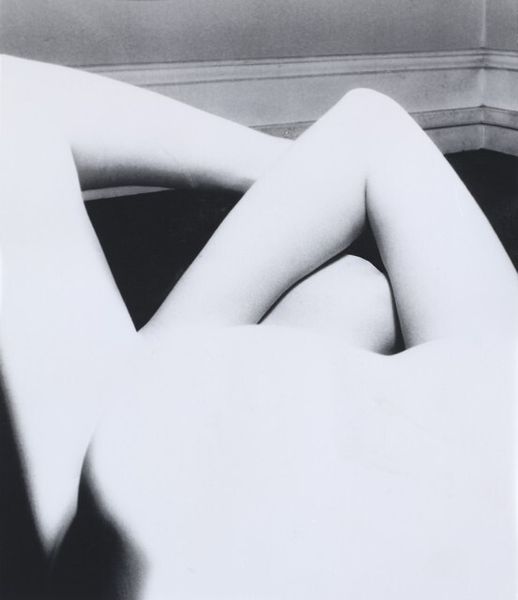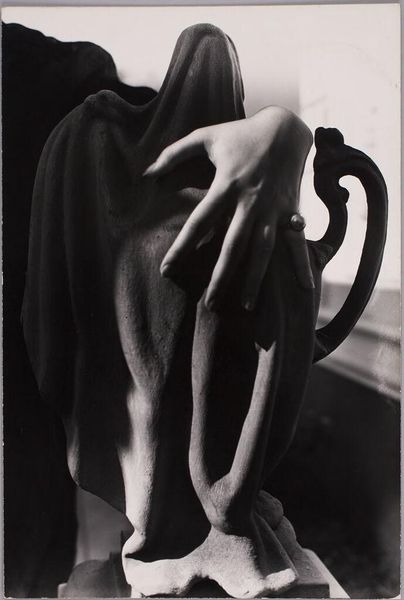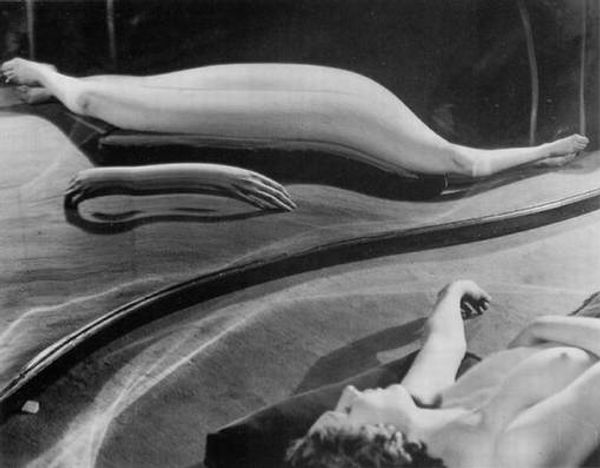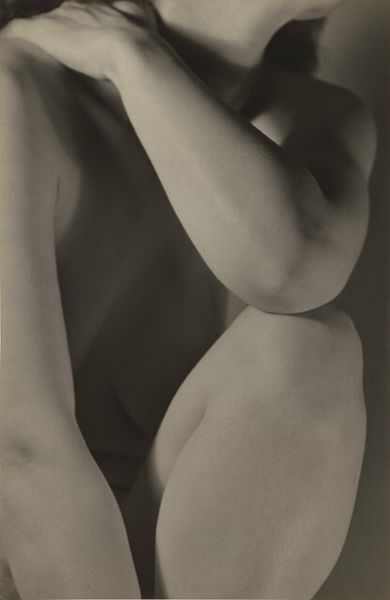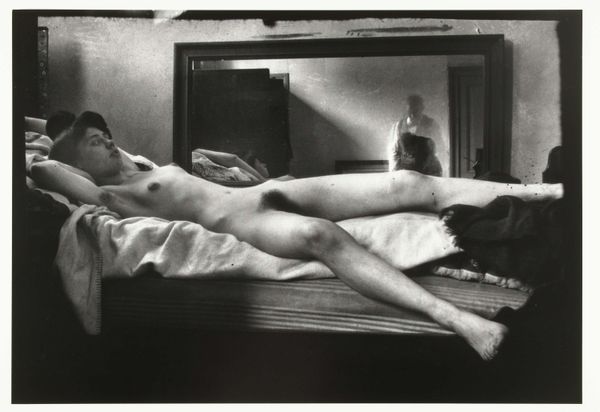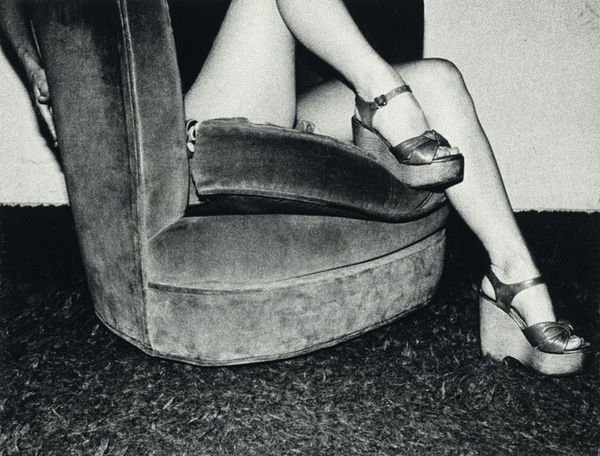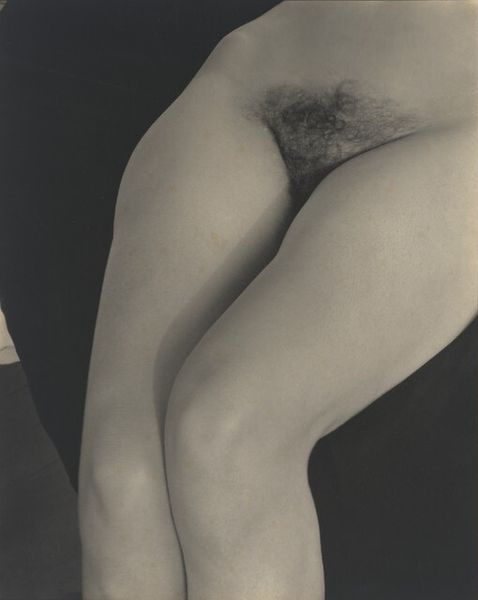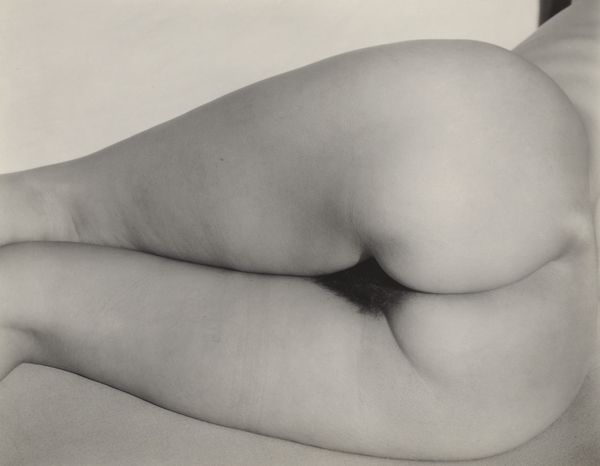
photography
#
art-deco
#
black and white photography
#
photography
#
body-art
#
black and white
#
monochrome photography
#
monochrome
#
nude
#
surrealism
#
monochrome
Copyright: Andre Kertesz,Fair Use
Curator: Well, I’d say my first impression is…disquieting. The proportions are so warped, it makes me deeply uneasy. Editor: Indeed. We're looking at Andre Kertesz's "Distortion #40," a photograph from his "Distortions" series. These works emerged during a tumultuous time between the wars in Paris and speak volumes about body image through their innovative photographic process. Curator: Process is key here, isn’t it? Knowing Kertesz used a funhouse mirror setup...suddenly it feels less about ideal form and more about the mechanisms of representation and its limitations. Editor: Precisely. Consider the act of capturing a distorted form and rendering it in black and white. The very texture, the grain of the monochrome image, emphasizes surface and manipulation, abstracting a familiar subject into a question of form. The ripples in the background echo and augment these concerns of altered spaces. Curator: You're drawing me in with your emphasis on texture, because it seems to reveal this relationship to other modernist experimentation in Europe. Even the Surrealist manipulation and disfigurement. But what was the socio-economic context in which the artist created these photographic distortions? Editor: Kertesz’s commercial practice—snapshots for magazines like Vogue, Harper’s Bazaar, Die Dame — funded the experiment of the series, and the flattery, the idealized image perpetuated through media came to challenge what constitutes an appropriate female form. This process calls out the very material and mechanisms involved in image making and the production of those images. Curator: And how fascinating to note Kertesz's commercial ventures bankrolled the experimentation! So, there’s tension. I still feel this is an unnerving portrayal. Yet hearing about these commercial origins allows a connection. It becomes something to which we all relate through this relationship. Editor: Absolutely, it seems to resonate with today's conversations on body image and the artificial standards often set. This photograph reminds us of both our physical realities and our societal constructions around the body. Curator: I can see now how these visual cues point us toward deconstruction. What a poignant demonstration, therefore, of the materiality behind image creation! Editor: Ultimately, viewing "Distortion #40" through its form provides insight into how visual representation and our experience connect so integrally to what exists in our own environments and society.
Comments
No comments
Be the first to comment and join the conversation on the ultimate creative platform.
